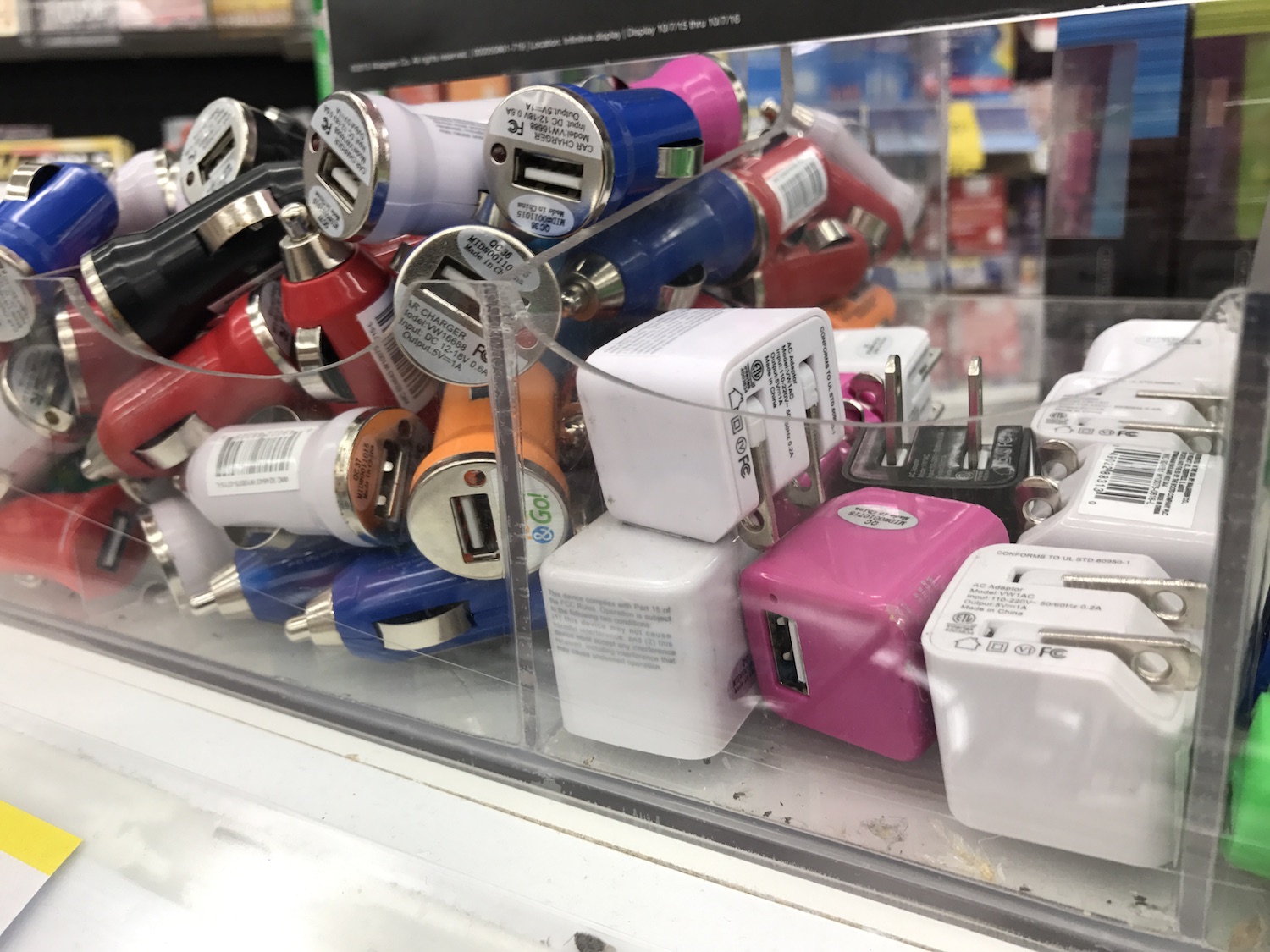Fire Hazards, Security Risks, and Counterfeits: The Problem with Cheap Phone Chargers
/It’s happened to the best of us. You lose your phone charger or finally get tired of driving home from work with 10% battery left so you decide to invest in a car charger. But because manufacturers’ chargers are so expensive, you check out Amazon to see if you can find a better deal.
The mobile accessories market is full of cheap phone chargers, most of them coming from third-party vendors (i.e., not the phone’s manufacturer). The options are seemingly endless on Amazon, and you’ve probably seen tubs of chargers or USB adapters for the car at gas stations or drug stores.
When you compare these cheap chargers with the more expensive ones manufactured by phone vendors like Apple and Samsung, the choice seems obvious – go cheap. But as often is the case with cheap, less expensive chargers are cheap for a reason, and some could put your phone, your home, and even your data at risk.
Read on to find out why, and to get some tips on phone charger safety.
Why Cheap Chargers Can Be Dangerous
The problem with cheap phone chargers is that their manufacturers are often not known for high quality standards. As a result, they flood the market with cheap and potentially hazardous devices.
For instance, in 2014, users noticed that some third-party iPhone chargers would damage a chip the iPhone 5, making it impossible to charge it and thus practically destroying it. And, as we saw last summer with Samsung’s Galaxy Note 7 fiasco, phone batteries can also pose fire hazards when not handled appropriately, and the slightest miscalculation regarding them can be disastrous. Cut-rate vendors of phone chargers aren’t likely to put the kind of research and quality control into place to make sure that your phone is charging safely, and the result can be anything from exploding chargers to phones catching the house on fire, as numerous horror stories reveal.
And some third-party vendors are more than negligent; they’re downright malicious. We have seen cases of cheap chargers using malicious firmware to send out messages to the users’ contacts and then even tried to access banking apps. The charger was able gain access to the phones because smartphones use the same port for charging as they use for transmitting data. Someone had placed a chip inside the charger which was able to use the connection with the phone’s port to gain access to it.
The moral of this story is that any time you plug your phone into something, you run the risk of opening it up to malware. All the more reason to make sure you trust the maker of your charger, right? Here are four tips to make sure that you can:
1. When possible, use chargers made by the phone’s manufacturer.
Yes, they’re more expensive than third-party options. But this is the best option for making absolutely sure that your charger will function properly with your phone.
2. If you buy from third-parties, choose reputable brands that are officially licensed by the smartphone’s manufacturer.
These won’t be the cheapest options on the market, but they are likely to be less expensive than those made by your phone’s manufacturer. A good rule of thumb is to only buy from vendors whose names you recognize. In the third-party smartphone accessories market, Belkin, Griffin Technologies, and Anker are reputable brands, and generally trustworthy.
More than this, though, it’s even better to make sure that the product you’re buying is officially licensed by your phone’s vendor. For instance, Apple licensed vendors will have an official “Made for iPhone” logo on their box.
The only problem with this, though, is that there has been an increasing number of counterfeit products on the market, which brings us to our next point:
3. Buy directly from vendors or from reputable retailers to avoid counterfeit products.
In December, Apple published a lengthy support post, complete with detailed diagrams and photos of minute details, aimed at helping consumers identify counterfeit chargers posing as genuine Apple products or Apple certified products. As you can see from the screenshot below, it can take an excruciating attention to detail to tell the difference.
This post most likely arose from Apple’s findings last year that almost 90% of the chargers sold on Amazon as “genuine” Apple products were actually counterfeit. What’s the world coming to when you can’t even trust chargers you buy from Amazon, right?
Unless you’re confident that you can spot counterfeit products, we recommend buying chargers and charging cables directly from vendors, especially if you’re purchasing online. If you’re buying from a retailer, make sure they are reputable and have a good return policy, and, honestly, it’s probably best to go to brick and mortar retailers where you can actually look at a product and its packaging than to order online.
4. Be very careful with public charging stations.
Charging stations are popping up in numerous public places, such as retail stores, restaurants, and bars. On the surface of it, this is a great amenity. How many times have you been out and about and realized your phone was dying?
But, for all the reasons we highlighted above, it's never a good idea to plug your phone into a device you can't trust. To be safe, it's probably best to avoid public charging stations for this reason, especially if the charging station looks "home made" (and thus is likely to include some cheaper components).
Need advice on which chargers are safe to buy, or on whether a charger you have is safe to use? Contact us today.






